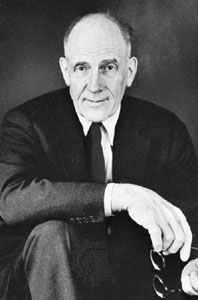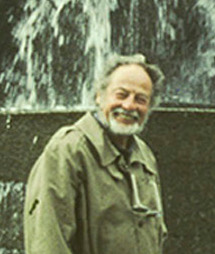
Ieoh Ming Pei was a Chinese-American architect. Raised in Shanghai, Pei drew inspiration at an early age from the garden villas at Suzhou, the traditional retreat of the scholar-gentry to which his family belonged. In 1935, he moved to the United States and enrolled in the University of Pennsylvania's architecture school, but he quickly transferred to the Massachusetts Institute of Technology. He was unhappy with the focus at both schools on Beaux-Arts architecture, and spent his free time researching emerging architects, especially Le Corbusier. After graduating, he joined the Harvard Graduate School of Design (GSD) and became a friend of the Bauhaus architects Walter Gropius and Marcel Breuer. In 1948, Pei was recruited by New York City real estate magnate William Zeckendorf, for whom he worked for seven years before establishing an independent design firm in 1955, I. M. Pei & Associates. In 1966 that became I. M. Pei & Partners, and in 1989 became Pei Cobb Freed & Partners. Pei retired from full-time practice in 1990. In his retirement, he worked as an architectural consultant primarily from his sons' architectural firm Pei Partnership Architects.

Ludwig Mies van der Rohe was a German-American architect. He was commonly referred to as Mies, his surname. Along with Alvar Aalto, Le Corbusier, Walter Gropius and Frank Lloyd Wright, he is regarded as one of the pioneers of modernist architecture.

Minoru Yamasaki was an American architect, best known for designing the original World Trade Center in New York City and several other large-scale projects. Yamasaki was one of the most prominent architects of the 20th century. He and fellow architect Edward Durell Stone are generally considered to be the two master practitioners of "New Formalism".

Wallace Kirkman Harrison was an American architect. Harrison started his professional career with the firm of Corbett, Harrison & MacMurray, participating in the construction of Rockefeller Center. He is best known for executing large public projects in New York City and upstate, many of them a result of his long and fruitful personal relationship with Nelson Rockefeller, for whom he served as an adviser.

Philip Cortelyou Johnson was an American architect best known for his works of modern and postmodern architecture. Among his best known designs are his modernist Glass House in New Canaan, Connecticut, and postmodern 550 Madison Avenue in New York, designed for AT&T, and 190 South La Salle Street in Chicago.

Robert Charles Venturi Jr. was an American architect, founding principal of the firm Venturi, Scott Brown and Associates, and one of the major architectural figures of the twentieth century.

Harry Seidler, AC OBE was an Austrian-born Australian architect who is considered to be one of the leading exponents of Modernism's methodology in Australia and the first architect to fully express the principles of the Bauhaus in Australia.

Lee Oscar Lawrie was an American architectural sculptor and a key figure in the American art scene preceding World War II. Over his long career of more than 300 commissions Lawrie's style evolved through Modern Gothic, to Beaux-Arts, Classicism, and, finally, into Moderne or Art Deco.

The International Style or internationalism is a major architectural style that was developed in the 1920s and 1930s and was closely related to modernism and modern architecture. It was first defined by Museum of Modern Art curators Henry-Russell Hitchcock and Philip Johnson in 1932, based on works of architecture from the 1920s. The terms rationalist architecture and modern movement are often used interchangeably with International Style, although the former is mostly used in the English-speaking world to specifically refer to the Italian rationalism of architects such as Giuseppe Terragni and Gino Pollini, or even the International Style that developed in Europe as a whole.

The Spanish Golden Age is a period of flourishing in arts and literature in Spain, coinciding with the political rise of the Spanish Empire under the Catholic Monarchs of Spain and the Spanish Habsburgs. The greatest patron of Spanish art and culture during this period was King Philip II (1556–1598), whose royal palace, El Escorial, invited the attention of some of Europe's greatest architects and painters such as El Greco, who infused Spanish art with foreign styles and helped create a uniquely Spanish style of painting. It is associated with the reigns of Isabella I, Ferdinand II, Charles V, Philip II, Philip III, and Philip IV, when Spain was one of the most powerful countries in the world.

Postmodern architecture is a style or movement which emerged in the 1960s as a reaction against the austerity, formality, and lack of variety of modern architecture, particularly in the international style advocated by Philip Johnson and Henry-Russell Hitchcock. The movement was introduced by the architect and urban planner Denise Scott Brown and architectural theorist Robert Venturi in their book Learning from Las Vegas. The style flourished from the 1980s through the 1990s, particularly in the work of Scott Brown & Venturi, Philip Johnson, Charles Moore and Michael Graves. In the late 1990s, it divided into a multitude of new tendencies, including high-tech architecture, neo-futurism, new classical architecture and deconstructivism.

Robert Arthur Morton Stern, usually credited as Robert A. M. Stern, is a New York City–based architect, educator, and author. He is the founding partner of the architecture firm, Robert A.M. Stern Architects, also known as RAMSA. From 1998 to 2016, he was the Dean of the Yale School of Architecture.

Lawrence Halprin was an American landscape architect, designer and teacher.

Daniel Urban Kiley was an American landscape architect, who worked in the style of modern architecture. Kiley designed over one-thousand landscape projects including Gateway Arch National Park in St. Louis.

The Governor Nelson A. Rockefeller Empire State Plaza is a complex of several state government buildings in downtown Albany, New York.

McKim, Mead & White was an American architectural firm that came to define architectural practice, urbanism, and the ideals of the American Renaissance in fin de siècle New York. The firm's founding partners Charles Follen McKim (1847–1909), William Rutherford Mead (1846–1928) and Stanford White (1853–1906) were giants in the architecture of their time, and remain important as innovators and leaders in the development of modern architecture worldwide. They formed a school of classically trained, technologically skilled designers who practiced well into the mid-twentieth century. According to Robert A. M. Stern, only Frank Lloyd Wright was more important to the identity and character of modern American architecture.
Costas Kondylis was an American architect. He designed over 85 buildings in New York City, many of them for real-estate developer and later U.S. president Donald Trump, through his eponymous architectural firm.

Der Scutt was an American architect and designer of a number of major and notable buildings throughout New York City and the United States.

The Royal Alcázar of Madrid was a fortress located at the site of today's Royal Palace of Madrid, Madrid, Spain. The structure was originally built in the second half of the ninth century by the Muslims, then extended and enlarged over the centuries, particularly after 1560. It was at this time that the fortress was converted into a royal palace, and Madrid became the capital of the Spanish Empire. Despite being a palace, the great building kept its original arabic title of Alcázar.

Trump Plaza is a 36-story cooperative apartment and retail building named after Donald Trump and located at 167 East 61st Street in the Upper East Side of Manhattan, New York City. The property, designed by Philip Birnbaum and built at a cost of $125 million, was opened in 1984.


















